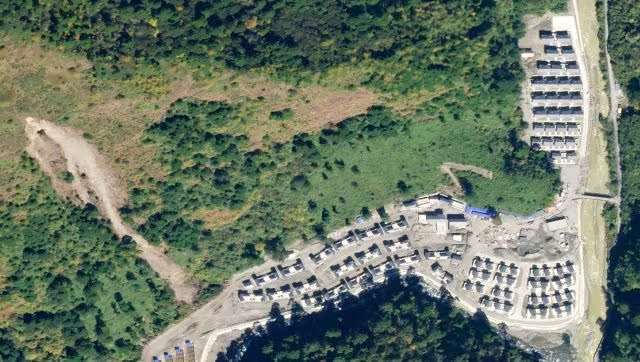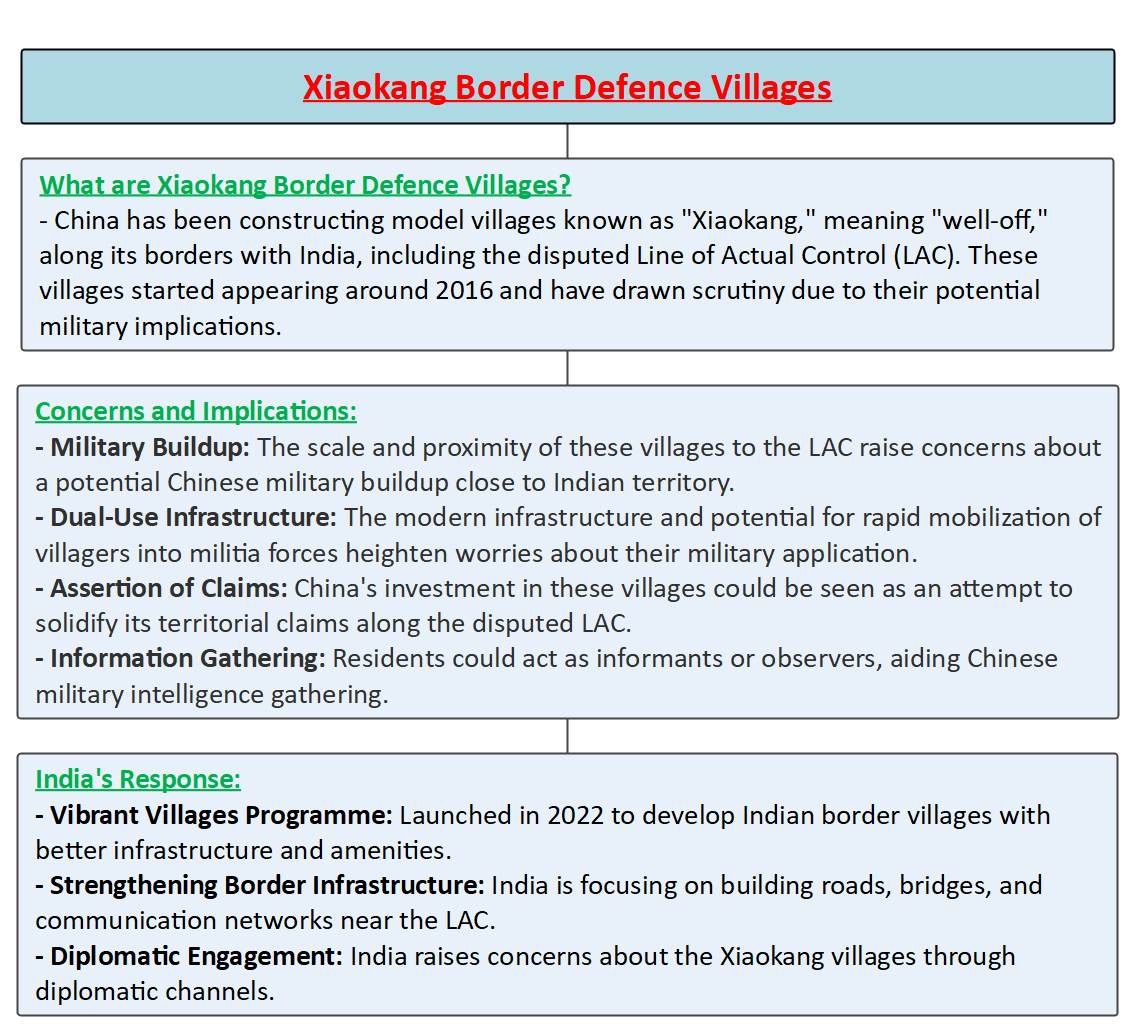Free Courses Sale ends Soon, Get It Now


Free Courses Sale ends Soon, Get It Now



Copyright infringement not intended
Picture Courtesy: https://www.firstpost.com/india/china-builds-xiaokang-border-defence-village-in-arunachal-implications-for-indias-security-10124821.html
Context: China has recently occupied newly constructed "Xiaokang" border villages along India's northeastern border, raising concerns due to their dual-use infrastructure near the Line of Actual Control in Arunachal Pradesh and Lohit Valley.
Xiaokang Border Defence Villages
Features
Steps Taken by India
Challenges
Way Forward

Conclusion
Must Read Articles:
India-China Border Dispute: https://www.iasgyan.in/daily-current-affairs/india-china-border-dispute-42
|
PRACTICE QUESTION Q. In the context of the broader global landscape, including the rise of new power dynamics and the US-China rivalry, how does the India-China border dispute fit into the larger strategic picture, and what are the potential implications for global security and stability? Answer Structure: ●Provide some background information on the India-China border dispute, such as the historical origins, the main areas of contention, and the recent developments. ●Analyze the broader global landscape, including the rise of new power dynamics and the US-China rivalry, and how they affect the interests and motivations of both India and China in the border dispute. ●Discuss the potential implications for global security and stability, such as the risks of escalation, the impact on regional cooperation, and the role of other actors and institutions. ●Conclude with some recommendations or suggestions for resolving or managing the border dispute peacefully and constructively. |
© 2024 iasgyan. All right reserved